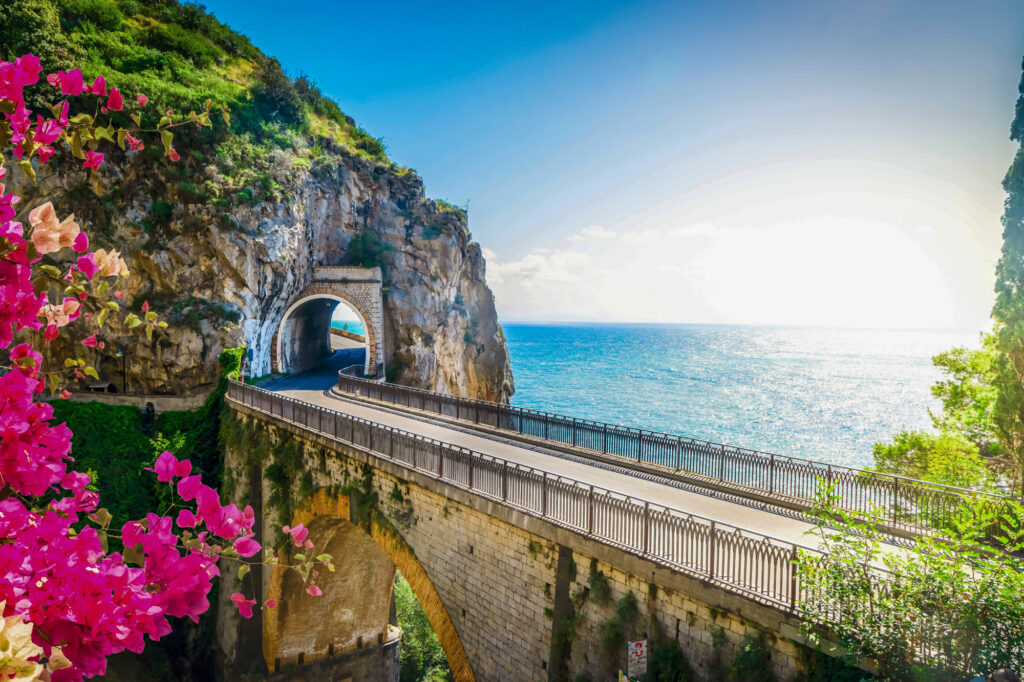
Paris, France
How to see Paris’s 5 most famous sights with fresh eyes
The Mediterranean • See & do • How to see Paris’s 5 most famous sights with fresh eyes
An insider’s guide to the must-see sights in Paris
It’s easy to think you’ve already seen Paris ’s big sights. They’re printed on tote bags and travel mugs. And yes – they’re crowded, commercial, often overdone. But that doesn’t mean they’re not worth your time. You just have to change how you approach them. Go early. Walk around the edges. Notice what most people overlook. These places aren’t just items on a checklist. They have shaped Paris and continue to do so. The trick is to slow down, stay curious and resist the urge to rush through with a camera out. So, instead of skipping the Paris icons, this guide is about reframing the familiar – noticing what most people miss.


01
Eiffel Tower
Forget the top deck. The best way to meet the Eiffel Tower is from underneath, where its iron legs spread like a cathedral of steel. Gustave Eiffel’s masterpiece wasn’t loved at first. Critics called it a monstrous skeleton. But today, this 330-metre lattice still shapes the city’s skyline – and its self-image. Instead of heading straight to the summit, start with the mechanics – the glass floors on the first level, the old hydraulic lifts still in motion and the surprisingly poetic names of 72 scientists engraved around its base. For a quieter angle, walk the Promenade Marie de Roumanie just after sunset, when the tower reflects in the Seine and the crowds thin. Or see it from Rue Saint-Dominique, where it looms unexpectedly between Parisian façades – more sculpture than skyscraper.
Eiffel Tower
Av. Gustave Eiffel
Paris
France


02
Louvre Museum
The Louvre is more like a collection of museums all housed within the walls of a grand palace. Skip the triangle-toting crowds at the main entrance and head through the lesser-known Porte des Lions, which drops you near the ancient sculpture galleries with fewer elbows. Originally a fortress, then a royal residence, the Louvre became a public museum during the French Revolution and its collection hasn’t stopped growing since. Instead of charging toward the Mona Lisa, choose one wing and wander slowly – the Galerie d’Apollon, with its gilded ceiling and Renaissance bling, feels like Versailles in miniature. If you’re up for it, go on Wednesday or Friday evening – the museum stays open later and there’s a hushed, almost secretive quality to the galleries.
Louvre Museum
99 Rue de Rivoli
Paris
France

03
Notre Dame Cathedral
Notre Dame Cathedral is open again – and yes, it still stops you in your tracks. After five years of restoration, the doors are wide open, the spire is back and the interior feels both familiar and new. Go early, before the tour groups file in. Walk slowly through the nave and pause before heading into the side chapels – they’re often empty and the best place to take in the details without feeling rushed. The spire now rises above the city again, visible from bridges and backstreets. But the best view might be from the Square Jean XXIII behind the apse, especially just before sunset.
Notre Dame Cathedral
6 Parvis Notre-Dame
Pl. Jean-Paul II
Paris
France


04
Arc de Triomphe
Most visitors look up at the Arc de Triomphe. But try standing inside it. Climb the tight spiral staircase and you’ll reach an open-air platform with a dizzying view of twelve radiating avenues – a sunburst of Parisian geometry. Commissioned by Napoleon in 1806 to honour the Grande Armée, it’s both triumphal and solemn. Beneath it, the Tomb of the Unknown Soldier flickers with an eternal flame – relit each evening at 6:30pm in a quiet ceremony that often goes unnoticed by the rush of selfie sticks. For a fresh perspective, arrive just before dusk, watch the flame rekindled, then climb up to catch Paris’s blue hour – when the city softens and the Eiffel Tower begins its glittering show.
Arc de Triomphe
Pl. Charles de Gaulle
Paris
France

05
Sainte-Chapelle
It’s not the stained glass that surprises – it’s how much of it there is. Sainte-Chapelle, a 13th-century royal chapel set within the Palais de Justice complex, is built like a jewel box of light. Fifteen towering windows depict over a thousand scenes from the Bible, each one soaked in purples, blues and reds so intense they seem backlit. But the real way to see this Gothic marvel anew is to visit early in the morning or during a classical concert at night. When music echoes off the coloured glass, it becomes almost impossible to separate sound from architecture. Originally built by King Louis IX to house relics – including the Crown of Thorns – Sainte-Chapelle was designed to impress both heaven and earth. And it still does.
Sainte-Chapelle
10 Bd du Palais
Paris
France
Share this
Stay in the know
Sign up for the latest hotspot news from the Mediterranean.











